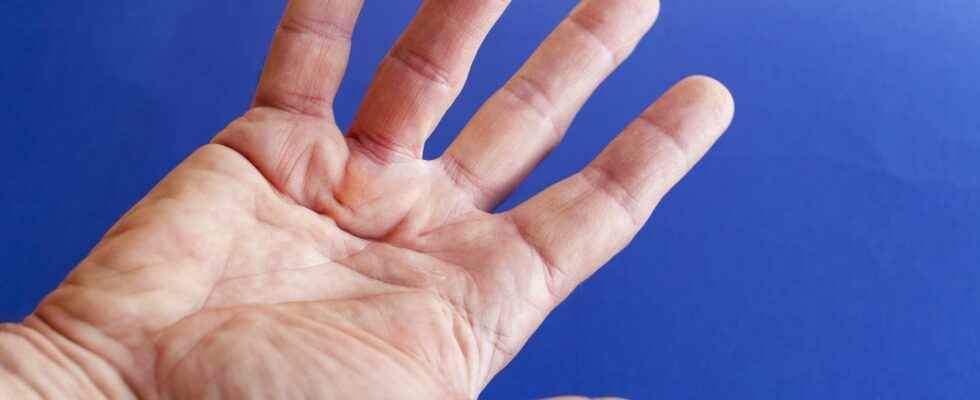Described in 1831 by Baron Guillaume Dupuytren, Dupuytren’s disease (MDD) is a progressive retraction of tissue fibrous (fascia) located in the palm of the hand with the appearance of nodules and deformity of the fingers. This disease with strong predisposition genetics particularly affects men (70 to 80%) over the age of 45. It affects approximately 3 to 5% of the European population, and up to 30% of Icelanders over the age of 70 – hence its nickname “disease of vikings “.
Dupuytren’s disease: symptoms
The first symptom of Dupuytren’s disease is the appearance of a fibrous nodule on the palm of the hand, most often in the ring or little finger. The disease progresses slowly, with progressive retraction of the palmar tissue. This loss of extension leads to fingers frozen in a hook, with the impossibility of opening the hand. The disability is sometimes important for daily and professional activities.
Dupuytren’s disease: causes
Dupuytren’s disease is caused by the proliferation of fibroblasts and myofibroblasts, which produce an accumulation of collagen. The origin of this disorder remains unknown, but genetic and immune causes (production of inflammatory cells by lymphocytes T). The disease is essentially linked to a terrain genetic. Several contributing factors have been mentioned (alcoholmanual work, epilepsy…) but these are correlations without proof of causation. Only the diabetes seems to have an influence on the onset of the disease.
Dupuytren’s disease: treatment
Many treatments have been tested to stop the progression of the disease (anti-inflammatories, Vitamin E, ultrasound…), but with little results. Some mild forms of the disease can be improved by non-surgical treatments, such as micropuncture where the bands are broken using micro-needles, or by injection of collagenase, a enzyme which splits the flanges.
When the discomfort is too great, surgery is necessary. Two treatments are possible: the simple section of a band (aponeurotomy) or theablation excess fibrous tissue (aponeurectomy). The latter is very delicate, the hand being an organ very rich in nerve fibers, with the appearance of possible complications and scars. In all cases, the risk of recurrence is high (about 50%).
You will also be interested
Interested in what you just read?
